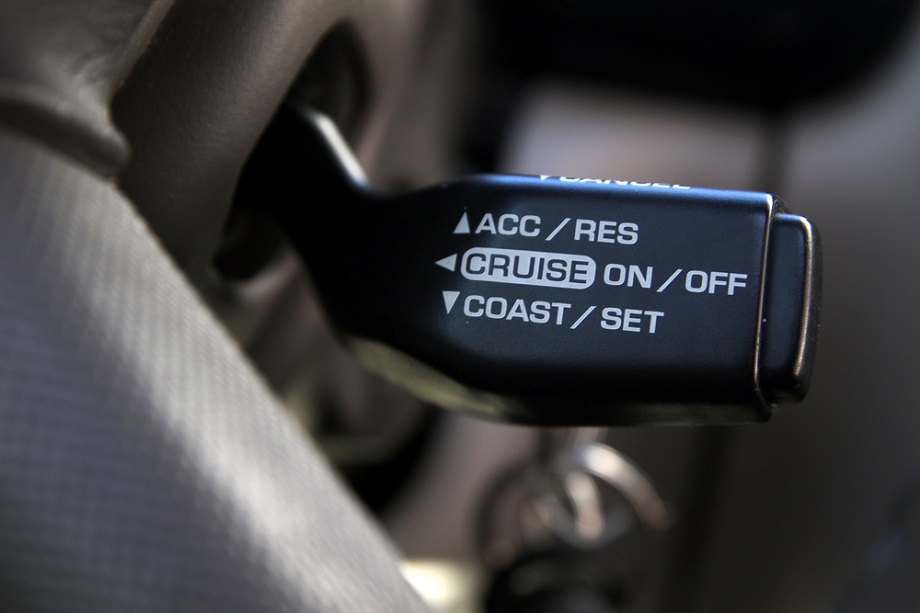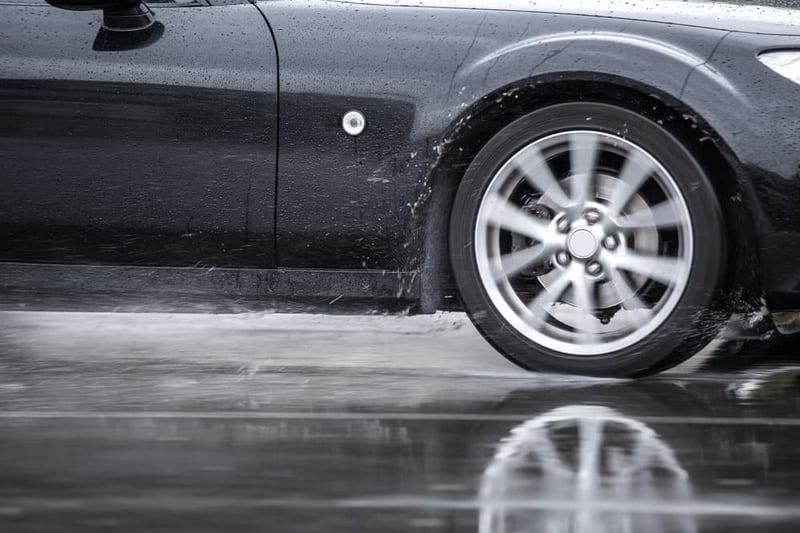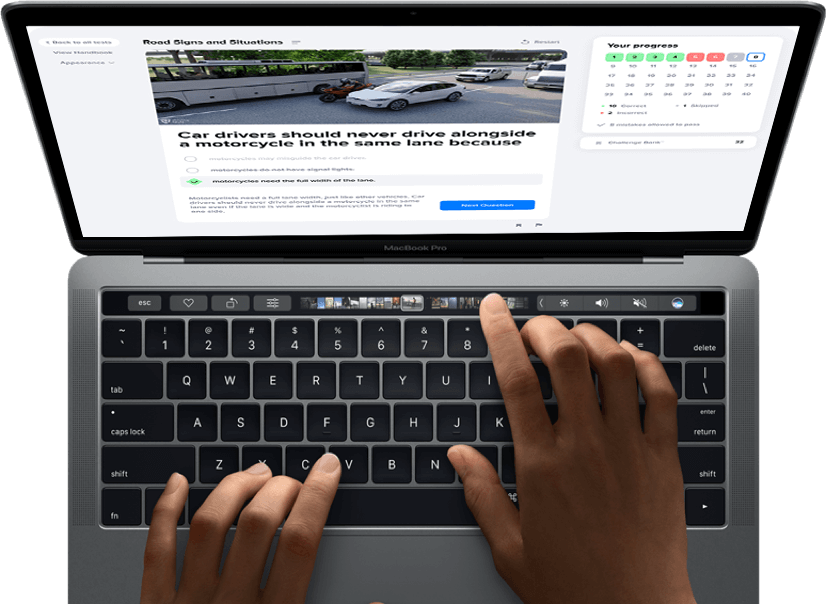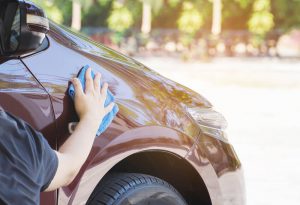Contents
Hydroplaning (also known as “aquaplaning”) happens when the tires of your vehicle begin to ride on top of standing water instead of the surface of the road. Contrary to most drivers’ beliefs, hydroplaning can occur even when the roads are only slightly damp. Whether you are driving in torrential rain or on roads that are still just a little damp from a shower that passed through hours ago, hydroplaning is a very real possibility and something that drivers should try to avoid at all costs. Hydroplaning not only strips drivers of their ability to steer their car, but it also causes feelings of helplessness, a terrifying experience for even the most experienced driver.
Most drivers have only a vague understanding of what hydroplaning is and how to prevent it. Our goal with this article is to provide you with the information necessary for keeping your car in good working order, so that you can avoid these hazardous conditions.
You’re reading one of our “Beginner Driver’s Guide” articles. Need to practice for your upcoming exam? Take our free sample driving test – no registration required! ✨
Avoiding hydroplaning is not that hard if you know how it happens. There are several things that you can keep in mind while driving in the rain or on wet roads that will lower your chances of losing control of your car. Read the following tips and implement them the next time you drive on a wet roadway:
9 Things to Do When Your Car Is Hydroplaning
- 1
Reduce your Speed
Most automobile safety experts agree that hydroplaning is most likely to occur at speeds greater than thirty-five miles per hour. As soon as the first drops hit your windshield, slow your speed considerably. It is best to drive five to ten miles slower than the speed limit, even slower in heavy rain or windy conditions. Sudden increases in speed, such as those required to pass, put you at a greater danger of hydroplaning. Avoid sudden accelerations at all costs.
- 2
Properly and Regularly Rotate and Balance your Tires
Keeping your tires in tune will also help prevent your car from hydroplaning on wet roads. It is advisable to have your vehicle’s tires rotated and balanced every other time you have your oil changed, approximately every seven to ten thousand miles.
- 3
Choose High Quality Tires that are Designed to Prevent Hydroplaning
This is particularly important for drivers who live in areas of the country with frequent rainfall. Replace your tires regularly. Driving on slick or bald tires can be detrimental on wet roadways.
- 4
No Cruising in the Rain
It’s dangerous to have cruise control on while driving in the rain
Never use your vehicle’s cruise control function while it is raining or while driving on wet roads. If you were to begin hydroplaning while driving with the cruise control on, it will take additional time for you to disable the function before beginning to regain control of your vehicle.
- 5
Avoid Puddles and Standing Water
Try to avoid any place on the roadway that you can see has collected water. It only takes a small film of water to cause hydroplaning. If you can actually see standing water, it is highly probable that your vehicle will hydroplane as it drives over it.
Sometimes hydroplaning occurs no matter how careful the driver is being. If your vehicle begins hydroplaning on a wet road surface, there are several steps to take to regain control:
How To Recover from Hydroplaning
- 1
Immediately take your foot off of the accelerator. Never use your brakes to respond to hydroplaning. Sudden braking on a wet roadway can cause your car to skid completely out of control.
- 2
Although it may seem contradictory, gently turn your steering wheel in the direction your car is hydroplaning. This will help your tires realign with the direction your vehicle is travelling and assist you in regaining steering control.
- 3
Wait to feel the tires reconnect with the surface of the road. It will be obvious to the driver when the vehicle has driven out of the hydroplaning situation.
- 4
After successfully recovering from hydroplaning on a wet road, you may need to pull over and take a few moments to recover and calm down from this terrifying event.
Remember that hydroplaning can happen in an instant. Check this video for crucial hydroplaning prevention and recovery tips.
Every driver should take extra precautions to prevent their vehicle from hydroplaning. If your vehicle does begin to hydroplane, follow the above safety tips to quickly recover control of the vehicle.
Hydroplaning can be avoided by going at safe speeds for the type of road and tire tread. It’s also important to maintain good tire pressure and make sure your windshield wipers are in good shape as well as your tires. Take it slow during bad weather and be aware of any puddles on the ground when driving through water or snow if you have to drive off-road at all.
Free DMV Practice Tests
- Alabama
- Alaska
- Arizona
- Arkansas
- California
- Colorado
- Connecticut
- Delaware
- District of Columbia
- Florida
- Georgia
- Hawaii
- Idaho
- Illinois
- Indiana
- Iowa
- Kansas
- Kentucky
- Louisiana
- Maine
- Maryland
- Massachusetts
- Michigan
- Minnesota
- Mississippi
- Missouri
- Montana
- Nebraska
- Nevada
- New Hampshire
- New Jersey
- New Mexico
- New York
- North Carolina
- North Dakota
- Ohio
- Oklahoma
- Oregon
- Pennsylvania
- Rhode Island
- South Carolina
- South Dakota
- Tennessee
- Texas
- Utah
- Vermont
- Virginia
- Washington
- West Virginia
- Wisconsin
- Wyoming




